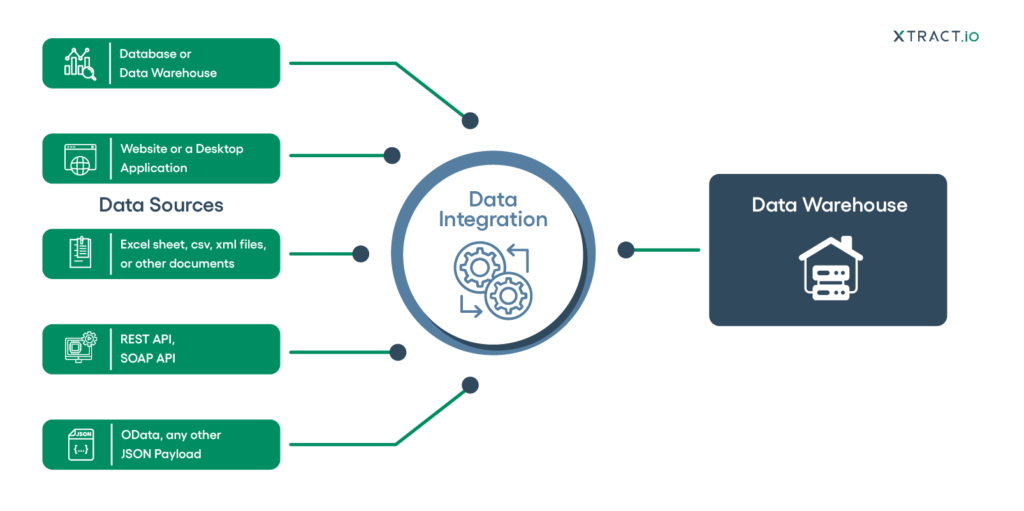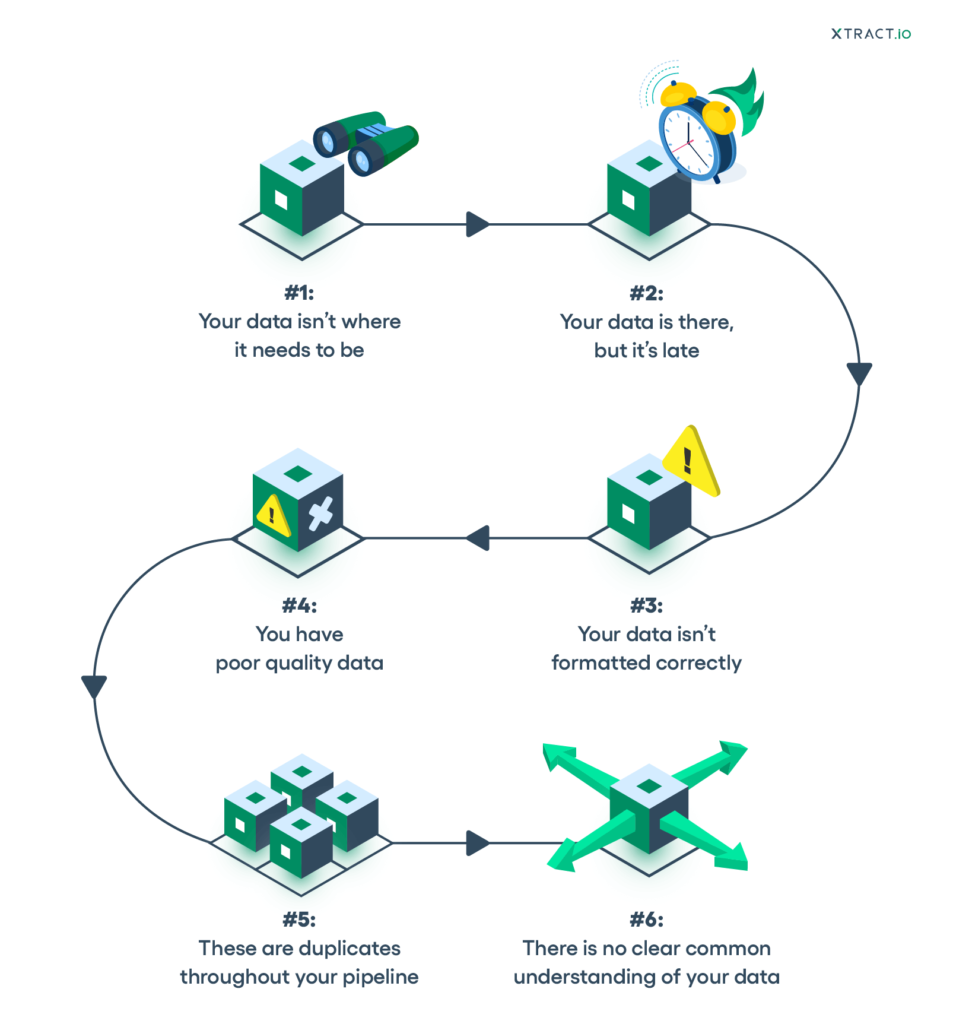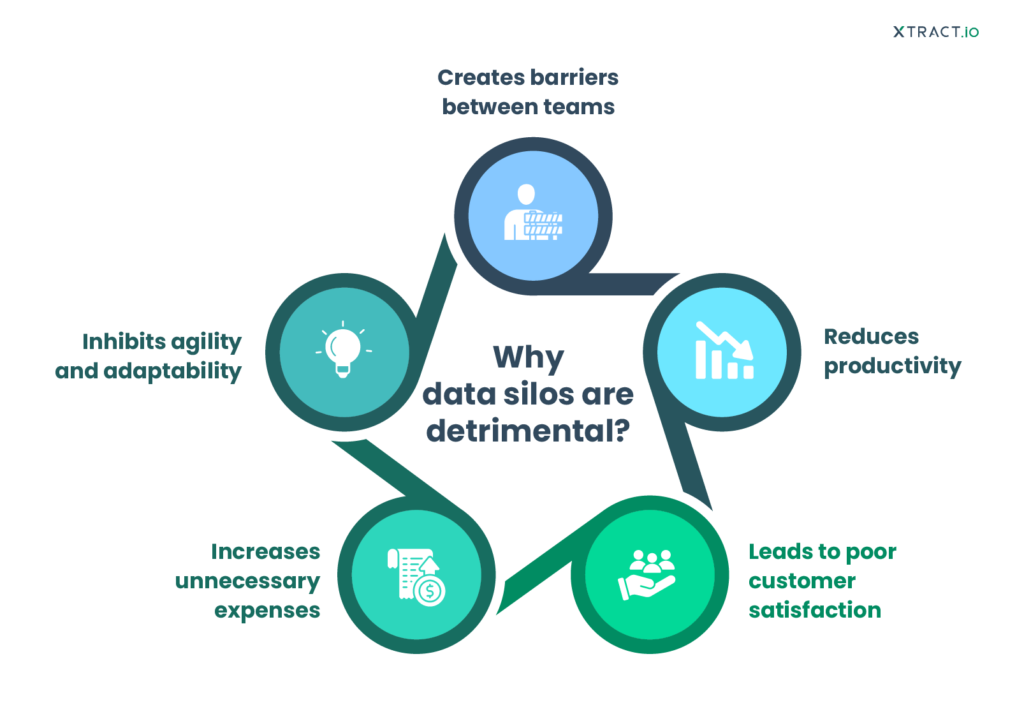Did you know that 73% of organizations consider data integration a top priority for their business strategy? In the fast-paced landscape of today’s digital world, where information flows from myriad sources, the ability to seamlessly integrate diverse data sets has become a game-changer. Data integration isn’t just a technical process; it’s a strategic imperative with transformative potential.
In a recent survey, 82% of businesses acknowledged that it significantly enhances operational efficiency. The statistic isn’t surprising when you consider that data integration goes beyond the mere consolidation of information – it’s the catalyst for a comprehensive understanding of organizational dynamics. Furthermore, it empowers businesses to embrace customer-centricity by providing a unified view of customer interactions across various touchpoints.
What is data integration?
Have you ever wondered how your favorite apps seamlessly sync information or how businesses transform a chaotic jumble of data into crystal-clear insights? Data integration solution is the key. It combines different data sources seamlessly into a unified and coherent view. You can establish connections within your software stack, ensuring an uninterrupted and efficient data flow throughout your organization. This guarantees that essential stakeholders can access the most relevant data precisely when and where it is most crucial for their operational needs.

Whether incorporating new data sources, accommodating technological changes, or scaling up operations, a well-implemented data integration solution is needed. The goal is to create a consolidated and accurate representation of information, eliminating silos and facilitating a holistic understanding of the data. It enables a connected, intelligent, and agile approach to data management, positioning organizations to navigate complexities and make impactful decisions in an ever-evolving landscape.
Key components of data integration
Extraction: The initial stage encompasses the extraction of data from diverse sources, such as spreadsheets, various data folders, etc. This process ensures that data is gathered comprehensively from all relevant repositories.
Transformation: Data must undergo transformations once extracted to ensure consistency and compatibility. This stage may involve cleaning, standardizing, and structuring the data to conform to a standard format.
Loading: The transformed data is transferred into a centralized location, a unified database, or a warehouse. It helps businesses to access information instantly and enhance customer experience.
Top data integration challenges
Data integration solutions can help businesses significantly transform how they deal with data and help stakeholders make informed decisions. But, there are vital data integration challenges companies should look for to avoid data chaos and unnecessary expenses.

Compatibility issues
Differing data formats, structures, and standards between systems can create compatibility hurdles during integration. Within an organization, various departments often operate with distinct systems tailored to their specific needs, resulting in disparate data formats and structures. These differences hinder the seamless flow of information, creating a compatibility challenge during integration efforts.
Every team in an organization follows unique procedures for inputting and refreshing data, often contributing information that may already exist in alternate applications or varying formats. For instance, one team might input phone numbers into a specific application using the format (00) 22-2222, while another team in a different application may input the same information as +00 22 2222. It leads to duplicate data entry in an organization. An efficient data integration solution is primary to address these challenges and enable easy data access.
Security concerns
Consider a multinational financial institution integrating its customer relationship management (CRM) system with the primary system for a more integrated view of interactions and financial transactions. Security becomes a critical concern as data flows seamlessly between these integrated systems. The institution handles sensitive information, including personal details, financial transactions, and investment portfolios.
As data flows seamlessly across integrated systems, ensuring its security becomes paramount. The challenge lies in implementing a powerful integration solution with robust encryption, access controls, and data protection measures to safeguard sensitive information.
Data silos
Data silos act as a significant barrier, challenging the seamless integration organizations aspire to achieve. The true challenge lies in disentangling these silos to unveil the full potential of integrated insights. For instance, consider a retail giant with segmented sales, inventory, and customer support databases. Each department operates within its data silos, limiting the organization’s ability to derive comprehensive insights from interconnected data.

Breaking down these silos is akin to bringing together a fragmented storyline, empowering the organization to gain a unified view of customer interactions, streamline operations, and make more informed decisions. This process is a pivotal facet of the broader challenge of data integration, where unity prevails over isolation, and a more holistic understanding of organizational data becomes a strategic advantage.
Outdated or poor-quality data
The success of any data integration endeavor hinges on the quality of the information involved. Maintaining consistency, accuracy, and reliability across diverse datasets demands meticulous attention. Integrated datasets may suffer from incomplete information, where specific data points are missing or not consistently provided across different sources. This incompleteness hampers the ability to derive comprehensive insights and may lead to skewed analyses.
For instance, consider a multinational retail corporation aiming to integrate its various data sources, including sales records, inventory databases, and customer feedback systems. The success of the data integration hinges on the quality of the information being integrated. The sales records may capture product names in different formats, the inventory databases might use varied units of measurement, and customer feedback systems could have diverse categorizations for satisfaction levels. The challenge here is to implement robust data cleansing and standardization processes to ensure the integrity of the integrated data.
Legacy systems
The integration of legacy systems poses a unique challenge due to their historical significance, operational reliability, outdated interfaces, and data standards. These systems, designed with specific functionalities and architectures that may not align with contemporary integration requirements, become a formidable obstacle in seamlessly integrating them into modern, agile infrastructures.
The challenge is amplified by obsolete interfaces lacking user-friendly features, hindering the smooth data flow between systems. Moreover, the outdated data standards employed by legacy systems create compatibility issues with current industry norms. Successfully addressing this challenge requires a strategic solution that balances preserving legacy functionalities with modernizing interfaces and data structures.
Final thoughts
As organizations navigate the intricate challenges of data integration, it’s essential to approach these hurdles with a strategic mindset. Overcoming these challenges requires a blend of advanced technology, and a commitment to fostering a data-driven culture within the organization. Empower your organization with a state-of-the-art AI-driven data integration solution that swiftly and cost-effectively tackles your challenges. Contact us today to initiate your seamless data integration journey.







